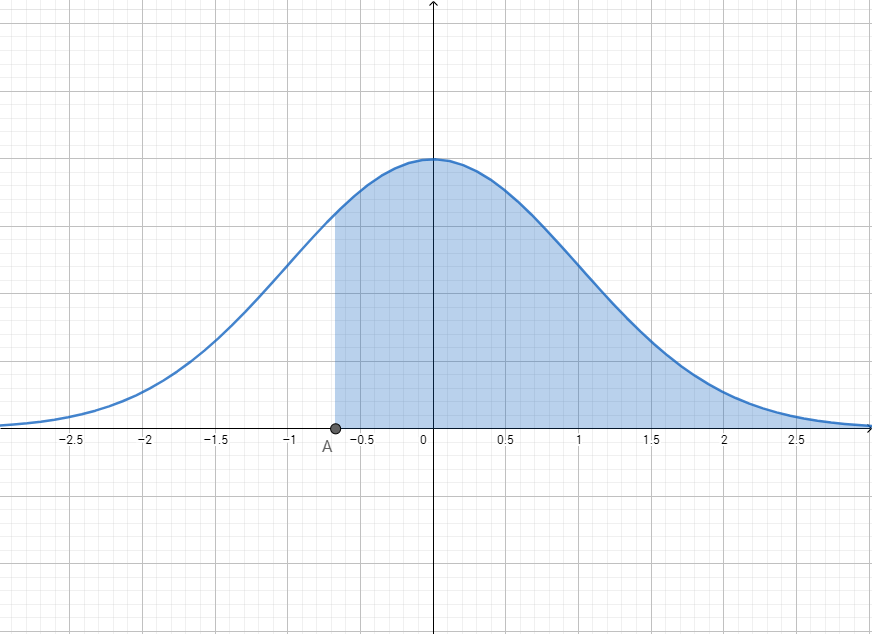Question #786ba
1 Answer
Explanation:
Finding a z score with a certain percentage of the area under a normal distribution curve lying to the right of it is often referred to as finding a "right tail" distribution. This is because, visually, the area being referred to can be seen as the right-hand portion of the normal graph past a certain z-score of

To do this, one will need to refer to either a z-score probability table, or use a computer algebra system (CAS) to determine the exact z-score needed.
We begin by letting
(With
Note that many/most of the available z-score tables provide the cumulative area probability, often known as the "left tail" distribution. This is not necessarily a problem, because for any given value
For this problem, then, we need to find
Thus we need a cumulative (aka "left-hand") area under the normal distribution curve of 0.25. To get this, you must use either a z-score table or an online/calculator tool.
One such table gives us two
The true value is between -0.68 and -0.67. A calculator provides a value of -0.67449.
